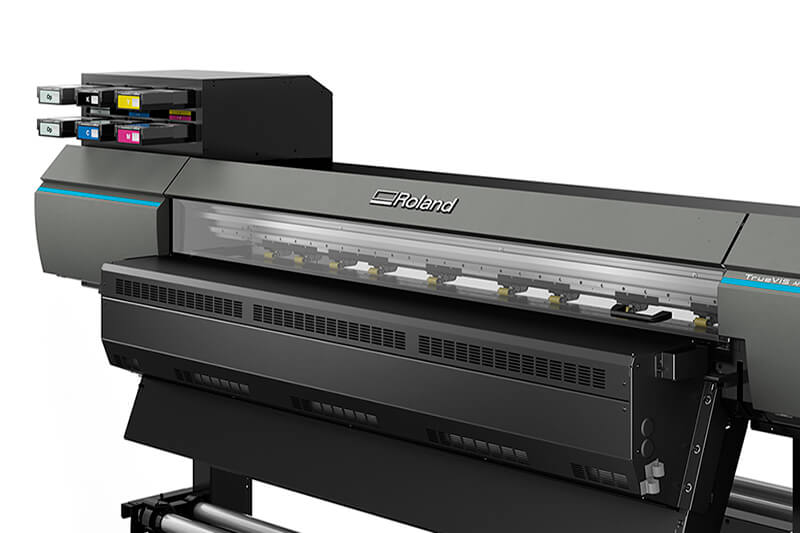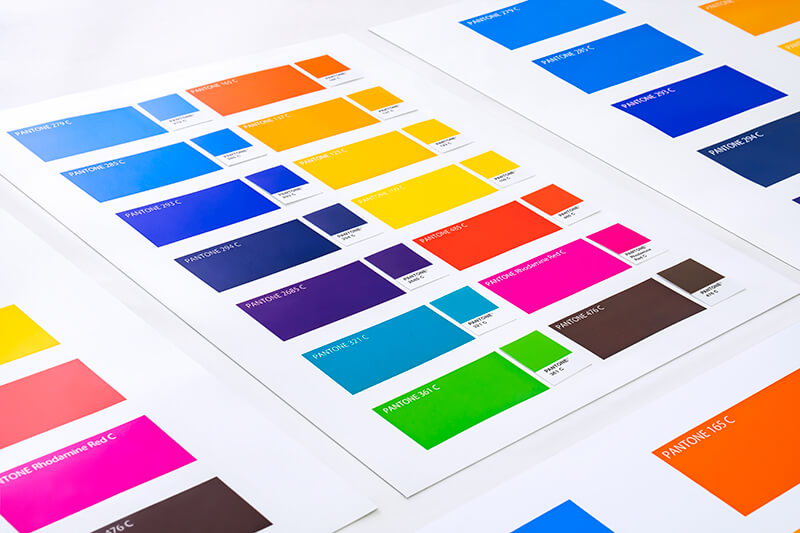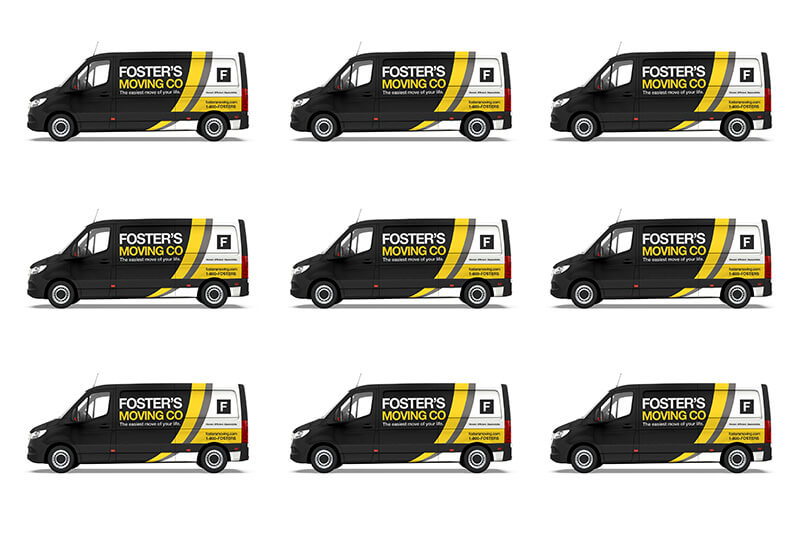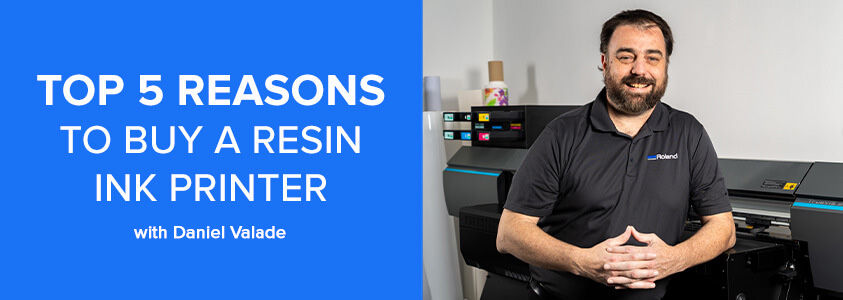Al parecer todos en la actualidad hablan sobre los beneficios de la impresión de tintas de resina, y por buenos motivos. Las tintas e impresoras de resina/látex modernas ofrecen opciones de colores ricos y vivos, la habilidad de manipular una amplia gama de sustratos, una ecológicamente responsable producción de bajas emisiones de compuestos orgánicos volátiles (COV), y secado rápido.
Esta versátil tecnología genera una potencia de rápida producción para una amplia gama de aplicaciones, incluyendo papeles tapiz, telas, gráficos de flotas, lienzos, señalización de interiores y exteriores, y otras. Para obtener más detalles sobre las formas en que su producción puede sacar provecho de la impresión con tintas de resina, hablamos con Daniel Valade, gerente de productos de impresión digital de Roland DGA.

Antes que nada, ¿las tintas de resina y látex son iguales?
Daniel Valade: las tintas de resina y látex son en verdad dos nombres para tecnologías similares de tintas multipropósito a base de agua. En realidad no hay látex ni resina en ellas. Aunque las diversas tecnologías de tintas de resina y látex son similares, las fórmulas específicas varían sustancialmente entre fabricantes, por lo tanto hay que estudiar cuidadosamente las opciones.
¿Cómo se imprimen las tintas de resina?
La impresión con tintas de resina trabaja precalentando el sustrato, luego de lo cual la impresora deposita microgotas de optimizador sobre éste. La microgota de tinta entonces cae dentro de la gota de optimizador, generando la cantidad justa de ganancia de punto. El uso de un optimizador de gran calidad es crítico para controlar el nivel de ganancia de punto, y por tanto controlar la calidad de la impresión.

¿Por qué recomienda usted la tecnología de tintas de resina?
Hay muchas razones para considerar añadir a su taller las habilidades de impresión con tintas de resina. Aquí mis cinco principales:

1. Amplia gama de colores.
En el pasado, los colores de las tintas de resina habían tenido la reputación de no ser tan profundos y ricos como aquellos generados con tintas eco-solventes; sin embargo, con las avanzadas máquinas de impresión y fórmulas de tintas, algunas tintas de resina son capaces de lograr colores ricos y profundos que igualen los resultados de las tintas eco-solventes.
De hecho, la TrueVIS™ AP-640 de Roland DG fue recientemente reconocida por su amplia gama cromática y excepcional calidad de impresión, obteniendo el Premio BLI Pick 2024. La TrueVIS™ AP-640 emplea la avanzada tecnología de control de puntos variables para disparar diferentes tipos de microgotas de tintas, generando imágenes de calidad insuperable.

2. Una versátil tecnología de impresión.
Las impresoras de tintas de resina/látex de hoy pueden producir una amplia gama de letreros permanentes y temporales, incluyendo gráficos de paredes, ventanas y pisos, gráficos de flotas, gráficos de oficinas y tiendas, pósters, pancartas, etiquetas y autoadhesivos.Adicionalmente, la tecnología de impresión a base de agua de las tintas de resina cumple con los requisitos para productos empleados en ciertos entornos tales como escuelas, centros de salud y hospitales. Este aspecto de sostenibilidad de las tintas de resina es también más solicitado a nivel de mercado, especialmente en gráficos de interiores. Las Tintas de Resina TrueVIS™ de Roland DG han logrado la Certificación Dorada GREENGUARD, la cual garantiza que cumplen con los más estrictos estándares para bajas emisiones de compuestos orgánicos volátiles (COV) hacia el aire de interiores.

3. Producción en grandes volúmenes.
Muchas impresoras de tintas de resina/látex están diseñadas para ser máquinas de producción de altos volúmenes, y algunas ofrecen a los usuarios costos de producción más bajos comparados con otras tecnologías. Muchos aprecian el tiempo ahorrado en las impresiones con tintas de resina, las cuales no requieren pasos adicionales de post-producción como desgasificación. Dependiendo del fabricante, los gráficos creados con impresoras eco-solventes o solventes requieren entre 6 y 48 horas de tiempo de desgasificación antes de que estén listas para su instalación o acabado. Las impresiones con tintas de resina están listas para ser laminadas, instaladas o transportadas de una forma mucho más rápida.
Adicionalmente, ya que las impresiones de resina no requieren ningún paso de post-producción, la impresora puede ser cargada con un solo tipo de sustrato y ser dejada funcionando durantes horas. Esto hace a las impresoras de tintas de resina idóneas en la impresión de telas para paredes o muebles, letreros de interiores, gráficos de ventanas y pisos, o gráficos de vehículos de flotas.
4. Opciones expandidas de sustratos.
En los últimos años, la tecnología de tintas de resina/látex ha evolucionado significativamente, y se ha expandido la gama de sustratos a los que estas tintas se adhieren. En la actualidad los fabricantes de impresoras de tintas de resina están enfocados en ayudar a los proveedores a hacer uso de una gama más amplia de materiales. Por ejemplo, los usuarios de la TrueVIS™ AP-640 de Roland DG tienen acceso a más de 200 perfiles de sustratos ICC.
Aunque hay sustratos especiales diseñados para impresoras de resina/látex, las tintas de resina son también compatibles con una amplia variedad de sustratos que incluyen materiales tradicionales de letreros así como textiles, papeles tapiz y papeles sin recubrimiento.

5. Impresiones durables y sostenibles.
Debido a la composición ecológica de las tintas de resina, sus impresiones son muy solicitadas para letreros y decoración de interiores, particularmente en escuelas y centros médicos. Ya que estas impresiones están diseñadas para verse de cerca, también tienden a ser productos de altos márgenes para talleres gráficos.
Adicionalmente, la durabilidad de las tintas de resina/látex ha mejorado a tal punto que sus impresiones son competitivas en aplicaciones de exteriores tales como gráficos de vehículos y flotas. Algunas fórmulas de tintas de resina o látex son preferentemente usadas en la rotulación de camiones contenedores y remolques donde se requiera menos adaptabilidad. Sin embargo, algunas de las tintas nuevas tales como las Tintas de Resina TrueVIS™ de Roland DG, son menos propensas a las resquebrajaduras, lo cual las hace una excelente opción para rotular vehículos con sus muchas curvas y bordes.
¿Hay otras consideraciones que los potenciales compradores debieran tener en cuenta?
Para asegurarse de que la impresora que usted elija continúe produciendo resultados vibrantes, consistentes y detallados, asegúrese de indagar sobre la tecnología de cabezales de impresión. Algunos fabricantes usan un cabezal térmico, el cual se puede degradar con el tiempo, dando como resultado una variación en colores cuando usted necesite repetir una impresión. Roland DG usa un cabezal piezoeléctrico, el cual es un tipo de cabezal industrial que entrega consistentemente impresiones vívidas con exactitud año tras año sin necesidad de ser reemplazado. Ya que los dispositivos de impresión son a menudo una de las inversiones más grandes que los propietarios de talleres gráficos pueden hacer, es importante considerar la reputación del fabricante de la impresora en confiabilidad y servicio. Roland DGA respalda la AP-640 con una garantía de dos años que incluye servicio y reparación in-situ.
¿Qué ve usted en el futuro de la impresión de tintas de resina?
Los líderes de la industria predicen que en los años por venir el mercado de gráficos impresos continuará su tendencia actual de fuerte expansión. Para seguir el ritmo de la creciente demanda, los proveedores gráficos necesitan considerar opciones que les permitan producir con eficiencia y a la vez mantener sus estándares de calidad y color.Las tintas de resina y látex, con sus fórmulas durables, sostenibles y de secado rápido, hacen más popular que nunca la producción con tintas de resina entre los proveedores y sus clientes.
Para más información sobre producción con tintas de resina, comuníquese con un experto Roland DG haciendo “clic” aquí.


